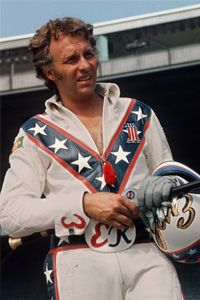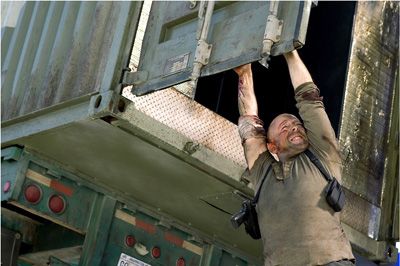Go find someone (preferably a male who grew up in the '70s, and more likely than not, you'll see it. It's a badge of honor for kids of the seventies, who, in between cutting up Stretch Armstrong and having their minds blown by "Star Wars," idolized a daredevil who literally leapt into the public consciousness in 1967. It's an Evel Knievel scar.
Long before Johnny Knoxville and Steve-O inspired Gen-Y slackers to try strange stunts and head for YouTube, Evel Knievel-inspired stunts that kept emergency rooms in the 1970s humming. And while the kids of the '70s are sitting in offices and boardrooms now, underneath the business suits and ties, many still have the scars of an Evel Knievel imitation stunt gone awry.
Advertisement
Of course, ending up with an injury while playing Evel Knievel didn't necessarily mean that the attempt wasn't a success. After all, Knievel himself ended up in the hospital after many of his stunts, and he even said that he was "nothing but scar tissue and surgical steel" [source: Severo]. But in addition to making an indelible impact on a generation of kids, Knievel also made an impact on popular culture. His stunts broke television viewership records as often as he broke bones. He inspired songs, merchandise and imitators and he even helped introduce motorcycles to mainstream American audiences.
But while Knievel is well-known for his stunts and fame, his life had darker patches as well. Years of abuse took their toll on Knievel's body, and his personal life seemed to endure almost as many crashes as he did. When it comes down to it, Evel Knievel was as much a daredevil in his personal life as he was in his professional one.
There's a lot more to Evel Knievel than what's on vintage lunchboxes or tributes on shows like VH1's "I Love the 70s." So keep reading to find out more about Evel Knievel, his life and his death-defying stunts.
Advertisement





